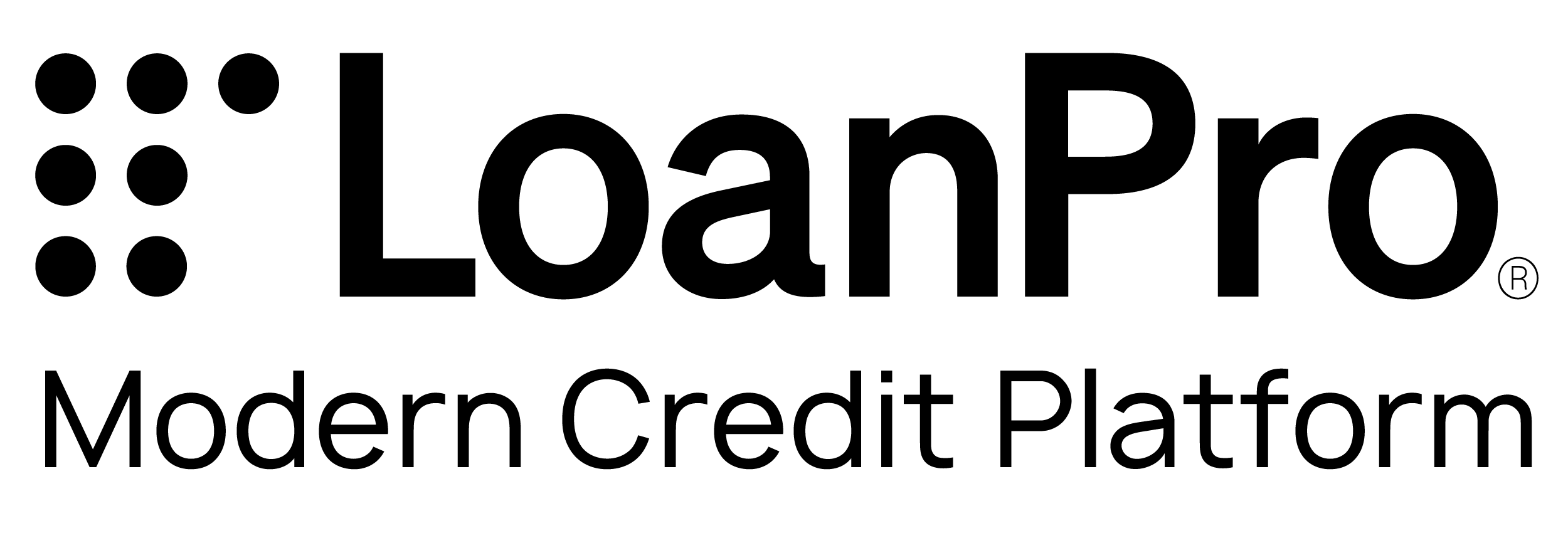Table of Contents
Audience: Loan Servicer or Collector, Upper Management, Loan Servicing/Collections Managers, Administrator, Compliance
Introduction
Sometimes lenders have to charge off an account. There are many different reasons lenders apply a charge-off (also called 'write-off' or 'write-down') and it is an important part of lending. This article will explain what charge-offs (formerly known as Charge-Offs) are, when they are used, what recovery payments are, and where to find Charge-Off History in LoanPro's loan management system (LMS). If you already understand charge-offs and want to start applying them to loans, read Net Charge-Off Overview.
Use Case: Convenience
Use Case: Credits/Write-Off
The Problem:
A borrower has made some irregular payments throughout their loan, which has left them with a remaining balance of just a dollar of their original $10,000 loan. The lender realizes that by the time they send out reminders and process it, they'll probably lose money by trying to collect so little. Plus, hounding borrowers over pocket change isn't great for optics.
LoanPro's Solution:
In cases like this, it's best to just forgive the small remaining balance. But instead of leaving the loan open forever or just archiving it and forgetting about it, we recommend logging a credit that charges off the account. You won't waste time collecting pennies and your books will reflect that a portion of the loan was forgiven (which can offset income for tax reasons). You can even automate the process with rules applied, so that any time a loan's payoff gets below a certain threshold, the system will automatically log the credit and charge-off the account.
What is a Charge-Off?
The purpose of a charge-off is to designate a portion of a loan 'uncollectible.' This can include the principal balance, fees, interest, or escrow. A charge-off helps lenders do two things: move loans off their books and account for their losses and uncollected revenue.
A charge-off allows the lender to decrease the amount of a loan. If they have a borrower who is not making their payments, the lender may choose to lower the amount of the loan. Lenders choose whether to charge off a loan, which balance to lower, and in what amount.
It is also the lender's choice to charge-off the loan balance or the principal balance. Principal balance is only the principal. Loan balance is the principal balance plus any fees, charges, interest, or escrow associated with the account. The lender can charge off the entire loan balance, which would cover the entire payoff amount, or they can charge off part of the loan balance. The same goes for principal balance: the lender can charge-off the entire principal balance or only a portion.
charge-offs are logged in LMS as a payment or a credit, either of which would be marked as a charge-off. Payments are more complicated to mark as a charge-off, but it can be done. We recommend our customers log charge-offs as a credit. While a credit is not always a charge-off, it will ask if the agent would like to mark this credit as a charge-off. Using credits reduces the chances of mistaking a charge-off for an actual payment where cash was received.
In LMS, lenders can do charge-offs manually or automatically. The automatic process will be defined by the company's specific charge-off process and then it will run on its own. The manual process is done by agents with the help of walkthroughs.
Where do Charge-Offs Fit?
There are many reasons a lender might have to charge off a loan. Charge-offs are usually a last resort. The following are three examples situations where a lender might want to charge off a loan.
- Uncollectible Balance – An uncollectible balance is a loan that is no longer being paid. For example, if a borrower hasn't made a payment on their loan in a couple of months and the lender cannot get ahold of them, the lender may decide to charge off the loan. This usually happens when they know the borrower just isn't going to pay them back. In this situation the entire loan balance is usually charged off, but it is up to the lender.
- Small Amount – There may be times when there is a very small amount left on a loan. Maybe a borrower paid off the loan but they didn't look at the payoff amount, they only looked at the principal balance and left $0.04 unpaid. In this situation the lender may decide it will cost less money to charge-off the $0.04 than it would to call the borrower and try to get the $0.04 from them.
- Forgiveness – If a borrower is not making their payments, the lender will usually try to get a hold of them. If the lender is able to reach them, sometimes they work out a deal. The lender offers to forgive a portion of the loan so the borrower can catch up and start making their payments again. In the long run, it was cheaper to forgive a part of the loan because now the lender can get more of their money back.
This Feature is Not
A charge-off does not forgive the borrower unless it is specifically a forgiveness charge-off. The borrower still owes the lender that money and it reports on the borrower's credit. But this is a way for lenders to get loans off their portfolio when they are not being paid back.
What's Next?
Now that you understand a bit more about charge-offs, we recommend checking out the articles below:
- Net Charge-Off Overview – Explains how to log charge-offs where they are recorded.
- Log a Recovery Payment – Provides instructions for logging recovery payments.
- Charge-Off Accounting – Explains how charge-offs are accounted for.
